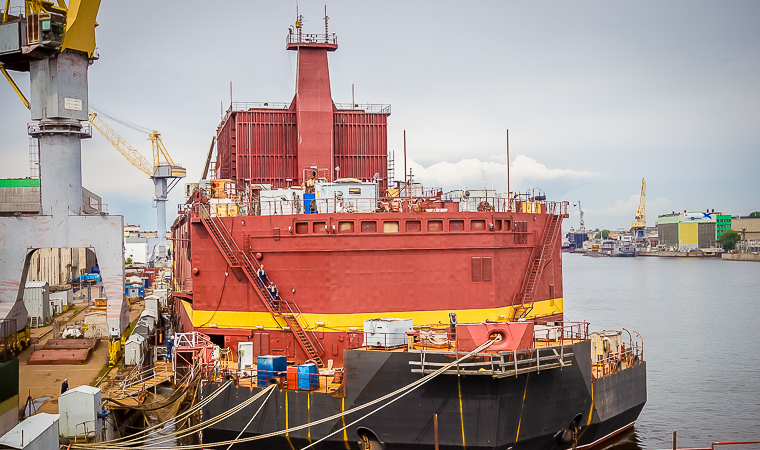
Landmark Reached in FNPP Project
back to contentsAkademik Lomonosov floating nuclear power plant (FNPP) undergoes scheduled harbor acceptance tests in Saint Petersburg. Engineers of the Baltic Shipyard put the rotor of the right steam turbine plant on barring gear to rotate the turbine shaft at a low speed of 7 revolutions per minute. This is required to ensure that turbine is properly mounted in accordance with specifications.
Putting the turbine on barring gear is an important landmark in preparing the FNPP for operation. The dry cranking test is needed to check whether all the wheelspace components are correctly assembled and whether turbines and generator shafts are properly aligned.
Before barring the rotor, engineers performed a number of mechanical and electrical checks on the turbine auxiliaries, including lubrication systems. After the turbine is put on barring gear, the turbine plant and its auxiliaries are ready for further harbor acceptance tests.
The plans are to perform the same operation on the second steam turbine plant by the year end (the FNPP has two STPs on board). Tests will then continue to check design parameters of the both STPs. After the harbor acceptance tests and preparations for transportation are completed, the FNPP will be tugged to Atomflot (a Rosatom Group company based in Murmansk) in the spring of 2018 for fuel loading and reactor startup.
In full compliance with IAEA standards
The project employs time-proven solutions that have been used in nuclear icebreakers for decades. The floating nuclear power plant (FNPP) is equipped with two KLT-40S reactors with a capacity of 35 MW each. The FNPP has been designed in full compliance with IAEA safety standards and is capable of withstanding extreme weather impacts, such as tsunami or other natural disasters. The FNPP is a totally autonomous power unit that can be transported to any part of the world. The capacity of the plant will be sufficient to sustain life in a city of 100,000 people. Having two KLT-40S reactors, the floating power unit is based on the design of a nuclear icebreaker reactor, the reliability of which was proven in long-time operation in the Arctic region. The FNPP has a 40-year service life divided into three 12-year operating cycles. After each cycle, the floating power unit will be transported to a special dock for intermediate maintenance and nuclear fuel reloading.




